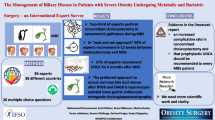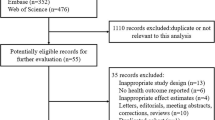Abstract
Aim
There are reports of changes in demographic and morphological characteristics of gallstone (GS) disease in South Asian countries. The changes in dietary factors have not been previously reported. The aim of the study was to identify dietary factors and lifestyle patterns among southern Indian patients with GS disease.
Methodology
Seventy-one consecutive patients with GS disease were compared with age- and sex-matched controls. Baseline demographic characteristics, alcohol intake and smoking, and dietary details were noted and associations examined statistically.
Results
The demographic and lifestyle variables were similar in both groups. Family history of GS disease and diabetes mellitus was higher among cases (16.9 %; p = 0.01; odds ratio (OR) 2.02; 95 % CI 1.58 to 2.58 for both). Vegetables consumed ≥2 times per week (OR 0.09; 95 % CI 0.04 to 0.21), fruits (OR 0.45; 95 % CI 0.20 to 0.99), and sugar (OR 0.27; 95 % CI 0.07 to 0.95) consumed ≥3 times per week were negatively associated with GS. Tea and coffee were taken less frequently by cases (2.5 vs. 2.9 cups/day; ANOVA p < 0.01). Tamarind (OR 27.6; 95 % CI 9.5 to 84.4), spicy foods (OR 6.6; 95 % CI 2.8 to 16.3), and fried foods (OR 9.1; 95 % CI 2.8 to 33.2) when taken ≥4 times per week and cooking oil ≥300 mL per month (OR 62.0; p < 0.0000) increased the risk for GS.
Conclusions
Several dietary preferences were associated with GS disease in this southern Indian population.
Similar content being viewed by others
References
Sarin SK, Kapoor BML, Tandon RK. Cholesterol and pigment gallstones in northern India: a prospective analysis. Dig Dis Sci. 1986;3:1041–5.
Kotwal MR, Rinchen CZ. Gallstone disease in the Himalayas (Sikkim and north Bengal): causation and stone analysis. Indian J Gastroenterol. 1998;17:87–9.
Tandon RK. Prevalence and type of biliary stones in India. World J Gastroenterol. 2000;6 Suppl 3:4–5.
Jayanthi V. Pattern of gallstone disease in Madras City, South India-a hospital based survey. J Assoc Physicians India. 1996;44:461–4.
Jayanthi V, Palanivelu C, Prasanthi R, Sunil M, Vijaya S. Composition of gallstones in Coimbatore District of Tamil Nadu state. Indian J Gastroenterol. 1998;17:134–5.
Gokulakrishnan S, Murugesan R, Mathew S, et al. Predicting the composition of gallstones by infrared spectroscopy. Trop Gastroenterol. 2001;22:87–9.
Selvaraju R, Ganapathi Raman R, Thiruppathi G, Valliappan R. Epidemiological study of gallstone in Cuddalore District. Int J Pharm Tech Res. 2010;2:1061–7.
Ashok M, Arunkumar K, Choudhury G, Kalkura N, Jayanthi V. Regional differences in composition of cholesterol gallstones in India. J Med Sci Res. 2012;3:3–5.
Ti TK, Wong CW, Yuen R, Karunanithy R. The chemical composition of gallstones: its relevance to surgeons in Southeast Asia. Ann Acad Med Singapore. 1996;25:255–8.
Kim MH, Ohrr HC, Chung JB, et al. The epidemiologic study in Korean gallstone disease: nationwide cooperative study. Korean J Gastroenterol. 1998;32:635–47.
Tsunoda K, Shirai Y, Hatakeyma K. Prevalence of cholesterol gallstones positively correlates with per capita daily calorie intake. Hepatogastroenterology. 2004;51:1271–4.
Chen CH, Huang MH, Yang JC, et al. Prevalence and risk factors of gallstone disease in an adult population of Taiwan: an epidemiological survey. J Gastroentrol Hepatol. 2006;21:1737–43.
Jayanthi V, Anand L, Ashok L, Vijaya S. Dietary factors in pathogenesis of gall stones disease in southern India—a hospital based case control study. Indian J Gastroenterol. 2005;24:97–9.
Sachdeva S, Khan Z, Ansari MA, Khalique N, Aneees A. Lifestyle and gallstone disease: scope for primary prevention. Indian J Community Med. 2011;36:263–7.
Sarin SK, Negi VS, Dewan R, Sasan S, Saraya A. High familial prevalence of gallstones in the first degree relatives of gallstone patients. Hepatology. 1995;22:138–41.
Tandon RK, Khanna S. Nutritional factors associated with gallstone disease. Iraqi Journal of Gastroenterology 2003;1:14–8.
Jayanthi V, Prasanthi R, Sunil M, et al. Epidemiology of gallstone disease—topline findings. Bombay Hosp J. 1999;41:494–502.
Hassan BAA. Changing pattern and incidence of gallstone diseases in Al–Kadhymia Teaching Hospital. Iraqi J Med Sci. 2011;9:176–83.
Misciagna G, Centonna G, Leoci C, et al. Diet, physical activity and gall stones—a population based case-control study in southern Italy. Am J Clin Nutr. 1999;69:1120–6.
Cuevas A, Miquel JF, Reyes MS, Zanlungo S, Nervi F. Diet as a risk factor for cholesterol gallstone disease. J Am Coll Nutr. 2004;23:187–96.
Gaby AR. Nutritional approaches to prevention and treatment of gallstones. Altern Med Rev. 2009;14:258–67.
Roslyn JJ, Conter RL, Julian E, Abedin MZ. The role of dietary iron in pigment gallstone formation. Surgery. 1987;102:327–33.
Ashok M, Rautray TR, Pranaba KN, Vijayan V, Jayanthi V, Kalkura SN. Energy dispersive x-ray fluorescence analyses of gallstones. J Radioanal Nucl Chem. 2003;257:333–5.
Rautray TR, Vijayan V, Ashok M, et al. PIXE analysis of gallstones. Internat J PIXE. 2005;15:147–52.
Chuah SY, Jayanthi V, Lee CN, McDonald B, Probert CS, Mayberry JF. Dietary fats and inflammatory bowel disease in Asians. Ital J Gastroenterol. 1992;24:386–8.
Tsai CJ, Leitzmann MF, Willett WC, Giovannucci EL. Dietary carbohydrates and glycemic load and the incidence of symptomatic gallstone disease in men. Gut. 2005;54:823–8.
Conflict of interest
None for all of the authors.
Ethics statement
The responsible ethics committee (institutional review board) has given approval, and the reported investigations have been carried out in accordance with the principles of the Declaration of Helsinki as revised in 2000.
Author information
Authors and Affiliations
Corresponding author
Rights and permissions
About this article
Cite this article
Chandran, A.P., Sivarajan, R., Srinivasan, V. et al. Risk profile for gallstone disease in southern Indian population: Is there anything new?. Indian J Gastroenterol 33, 254–257 (2014). https://doi.org/10.1007/s12664-014-0453-3
Received:
Accepted:
Published:
Issue Date:
DOI: https://doi.org/10.1007/s12664-014-0453-3




